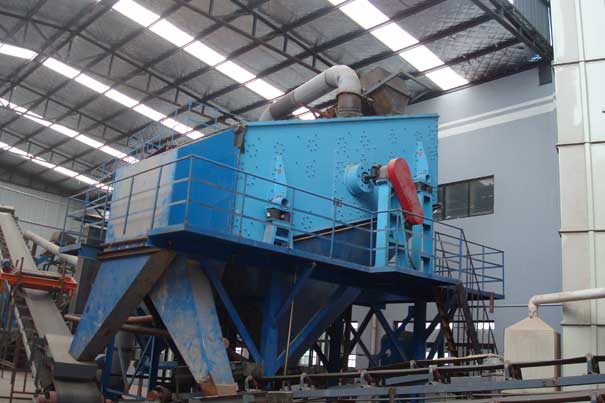Vibrating screen is a kind of vibrating screening mechanical equipment suitable for dry screening of wet and fine-grained materials that are difficult to screen. It is currently the domestic vibrating screening mechanical equipment for processing difficult-to-screen materials. The vibrating screen has the technological characteristics of large amplitude, large vibration intensity, lower frequency and elastic screen surface. The maximum opening rate is always maintained during the working process, so that the screening efficiency is high, the processing capacity is large, the screen plate is easy to replace, and the cost is reduced. The large screen surface and large processing capacity of the vibrating screen can meet the needs of on-site production. The structure of the vibrating screen adopts multi-stage screen surface vibration, and the screen box and frame do not participate in the vibration movement mode, so that the screen has been enlarged.
Classification of vibrating screen
The light fine vibrating screen can be divided into: rotary vibrating screen, linear screen, straight row screen, ultrasonic vibrating screen, filter screen, etc., please refer to the vibrating screen series.
The working principle of vibrating screen
When the vibrating screen is working, the two motors synchronously and reversely rotate to make the exciter produce a reverse excitation force, forcing the screen body to drive the screen to move longitudinally, so that the material on it is periodically thrown forward for a range due to the excitation force so as to complete the material screening operation. It is suitable for screening sand and gravel materials in quarries, and can also be used for product classification in coal preparation, mineral processing, building materials, electric power and chemical industries. The working part of the vibrating screen is fixed, and the material is screened by sliding along the working surface. Fixed grid sieve is one of the most widely used in concentrators, generally used for pre-screening before coarse crushing or medium crushing. It has a simple structure and is convenient to manufacture. It does not consume power and can directly unload the ore onto the screen surface. The main disadvantages are low productivity and low screening efficiency, generally only 50-60%.
The working surface of the vibrating screen is composed of horizontally arranged rolling shafts. There are plates on the shafts, and fine-grained materials pass through the gaps between the rollers or plates. The bulk material is driven by the roller to move to one end and is discharged from the end. Concentrators generally seldom use this kind of sieve. The working part of the vibrating screen is cylindrical, and the entire screen revolves around the axis of the cylinder, and the axis is generally installed at a small inclination angle. The material is fed in from one end of the cylinder, the fine material passes through the sieve hole of the cylindrical working surface, and the coarse material is discharged from the other end of the cylinder. The rotating speed of the cylindrical screen is very low, the work is stable, and the power is well balanced. However, the sieve holes are easy to block, the screening efficiency is low, the working area is small, and the productivity is low. Concentrators rarely use it as screening equipment. The vibrating screen body is swinging or vibrating in a plane. According to its plane motion trajectory, it is divided into linear motion, circular motion, elliptical motion and complex motion. Shaking screens and vibrating screens fall into this category. When the vibrating screen is working, the two motors are synchronously and reversely placed to cause the exciter to generate a reverse excitation force, forcing the screen body to drive the screen to move longitudinally, so that the material on it is periodically thrown forward for a range by the excitation force so as to complete the material screening operation. The oscillating screen uses a crank connecting rod mechanism as a transmission component. The motor drives the eccentric shaft to rotate through the belt and pulley, and uses the connecting rod to make the body reciprocate in a certain direction.



